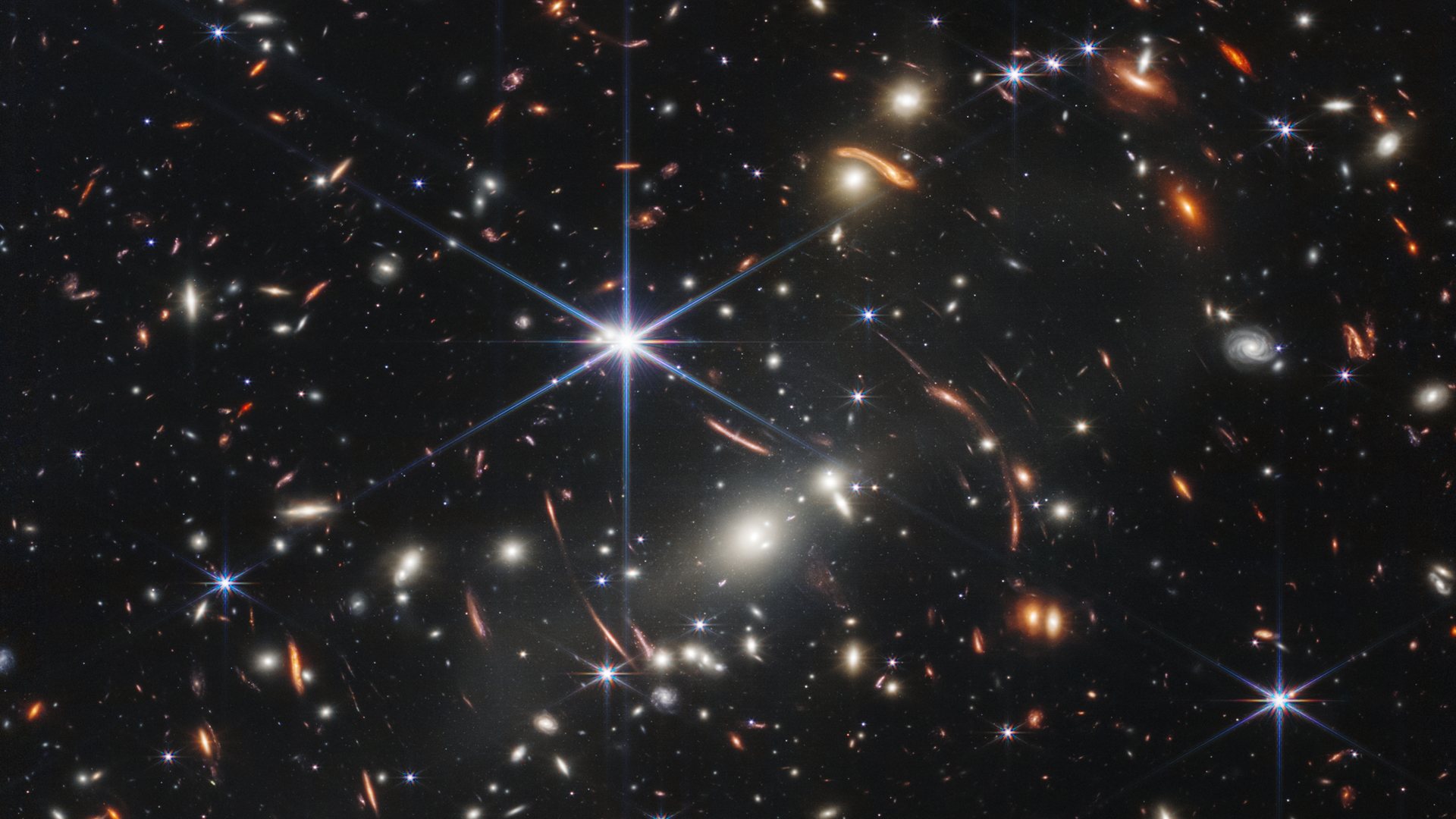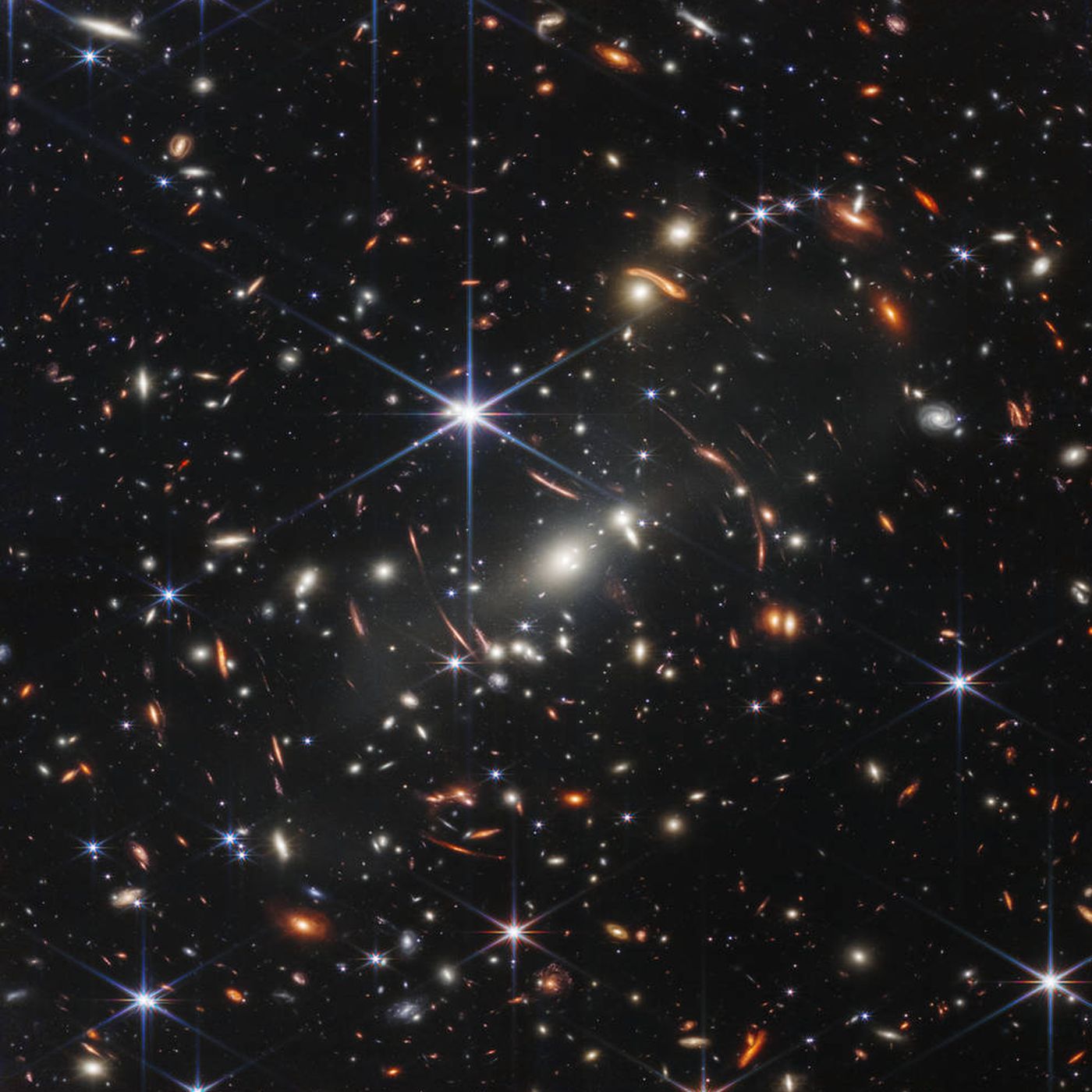James Webb Space Telescope reveals distances of nearly 200 deep-space galaxies
The telescope continues to uncover secrets about the universe's history.

NASA's James Webb Space Telescope has helped astronomers determine the distance to nearly 200 galaxies and galaxy clusters formed in the universe's early days.
One of the first publicly released images from the James Webb Space Telescope (JWST or Webb), released on July 11, 2022, captured at least 7,000 galaxies in a sparkling deep field view. The image is a rich hunting ground for astronomers seeking to learn more about how galaxies change over time.
A new Canadian-led study is the first to measure galactic distances in the image, showing huge collections of stars as far as 10 billion light-years away from Earth. (The universe itself is about 13.7 billion years old.)
"The clusters represent ideal targets for future studies to better understand how galaxies and the clusters they inhabit have evolved," research team members stated in a University of Montreal press release from Oct. 31.
Related: This James Webb Space Telescope image shows spiral galaxy in stunning detail
JWST's mission in large part involves peering deep into the universe to uncover changes since the Big Bang, the event that formed and rapidly inflated our universe. Astronomers still have questions about what happened next, such as how light emerged, how the first stars formed and when the first galaxies came together.
The $10 billion NASA telescope launched in December 2021 with a set of powerful instruments. These included the Canadian NIRISS (Near Infra-Red Imager and Slitless Spectrograph), which is optimized to gather spectra, or light signatures, from distant stars and galaxies. Spectra reveal information such as an object's distance through redshift — the stretching of light toward the red edge of the spectrum due to the universe's expansion pulling the luminous object away from us.
Breaking space news, the latest updates on rocket launches, skywatching events and more!
"NIRISS is perfect for doing this because it can measure the redshifts of hundreds of galaxies at once," lead author Gaël Noirot, a postdoctoral researcher at Saint Mary's University in Halifax, Nova Scotia, said in the statement. "Our recently published study will be a valuable resource for the astronomical community, and open up new avenues of research."
Related: James Webb Space Telescope gazes into a galactic garden of budding stars (image)
The study revealed new galaxies in the SMACS 0723 galaxy cluster, or vast collection of galaxies, whose light took more than 4 billion years to get to Earth. Astronomers continue to harvest this data to learn more about how the structures change under the influence of dark matter. Dark matter makes up roughly 80% of the universe's mass and affects aspects such as the rate of expansion. But it is only visible through gravitational effects, making it difficult to chart.
Other findings came to light as well. The team spotted three objects with greater-than-normal densities, or overdensities, than one would expect in a lone galaxy. The discovery suggests that SMACS 0723 may host three newly found galaxy clusters roughly eight to 10 billion light-years away from Earth.
What's more, one of these overdense regions hosts the "Sparkler Galaxy" revealed in September 2022. Sparkler is nine billion light-years away and could host the universe's first star clusters. The newly found overdensities suggest the Sparkler is not an isolated example.
"The fact that the Sparkler does not live alone, but is a member of a family of galaxies, has important implications for how first star clusters formed after the Big Bang," said study co-author Marcin Sawicki, a professor and Canada Research Chair at Saint Mary's. Sawicki also co-authored the September 2022 Sparkler study.
Members of the Canadian NIRISS Unbiased Cluster Survey, including the study authors, will use the instrument once again during JWST's second year of observations. They plan to peer even further into the deep field to seek new galaxies, galaxy clusters and overdensities.
The new study was published in the October 2023 issue of the Monthly Notices of the Royal Astronomical Society.

Elizabeth Howell (she/her), Ph.D., was a staff writer in the spaceflight channel between 2022 and 2024 specializing in Canadian space news. She was contributing writer for Space.com for 10 years from 2012 to 2024. Elizabeth's reporting includes multiple exclusives with the White House, leading world coverage about a lost-and-found space tomato on the International Space Station, witnessing five human spaceflight launches on two continents, flying parabolic, working inside a spacesuit, and participating in a simulated Mars mission. Her latest book, "Why Am I Taller?" (ECW Press, 2022) is co-written with astronaut Dave Williams.

